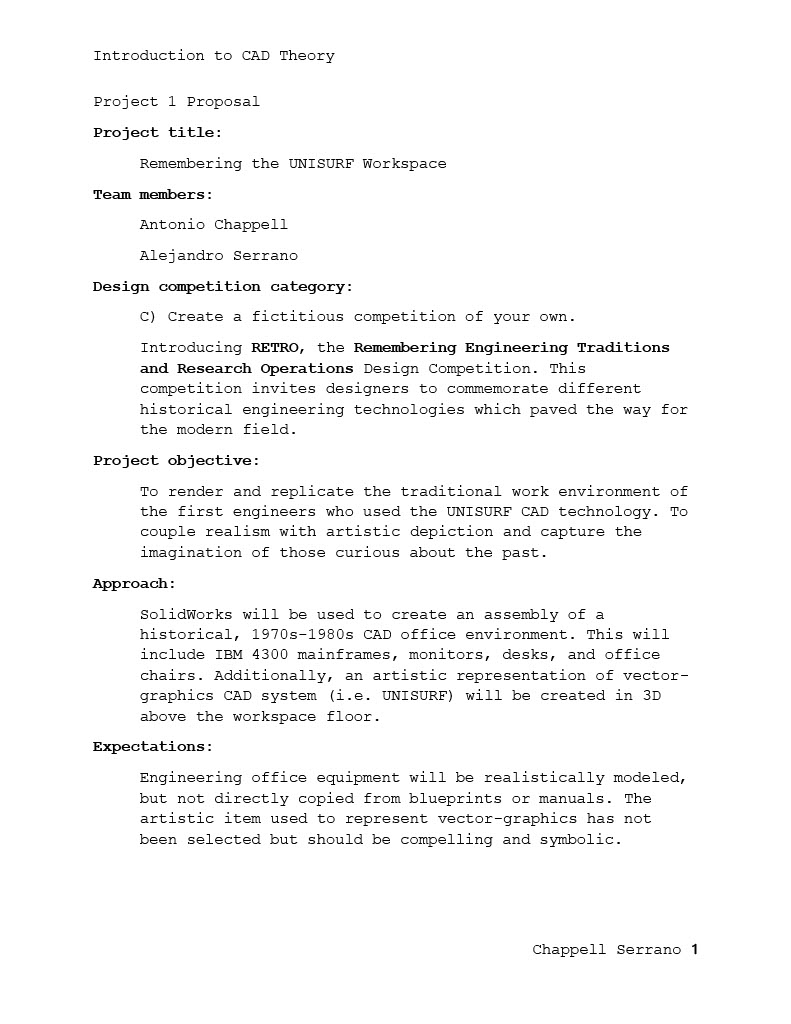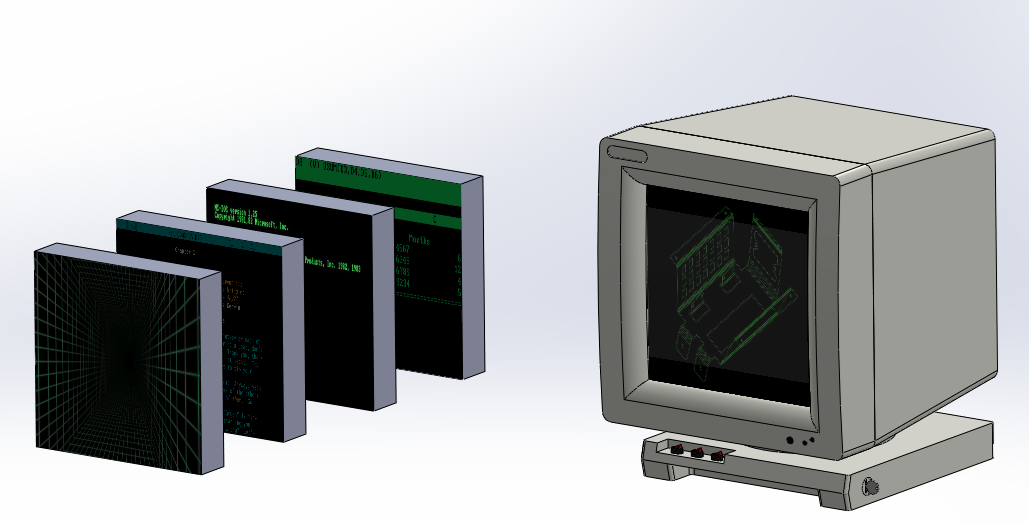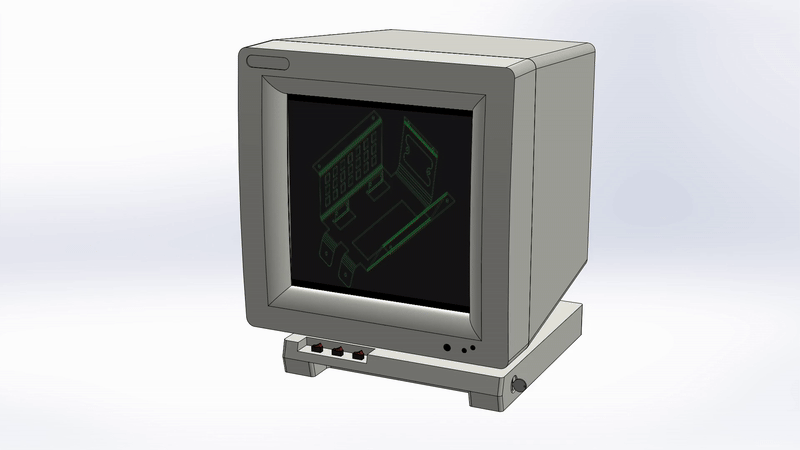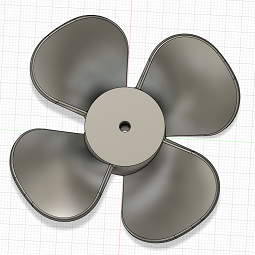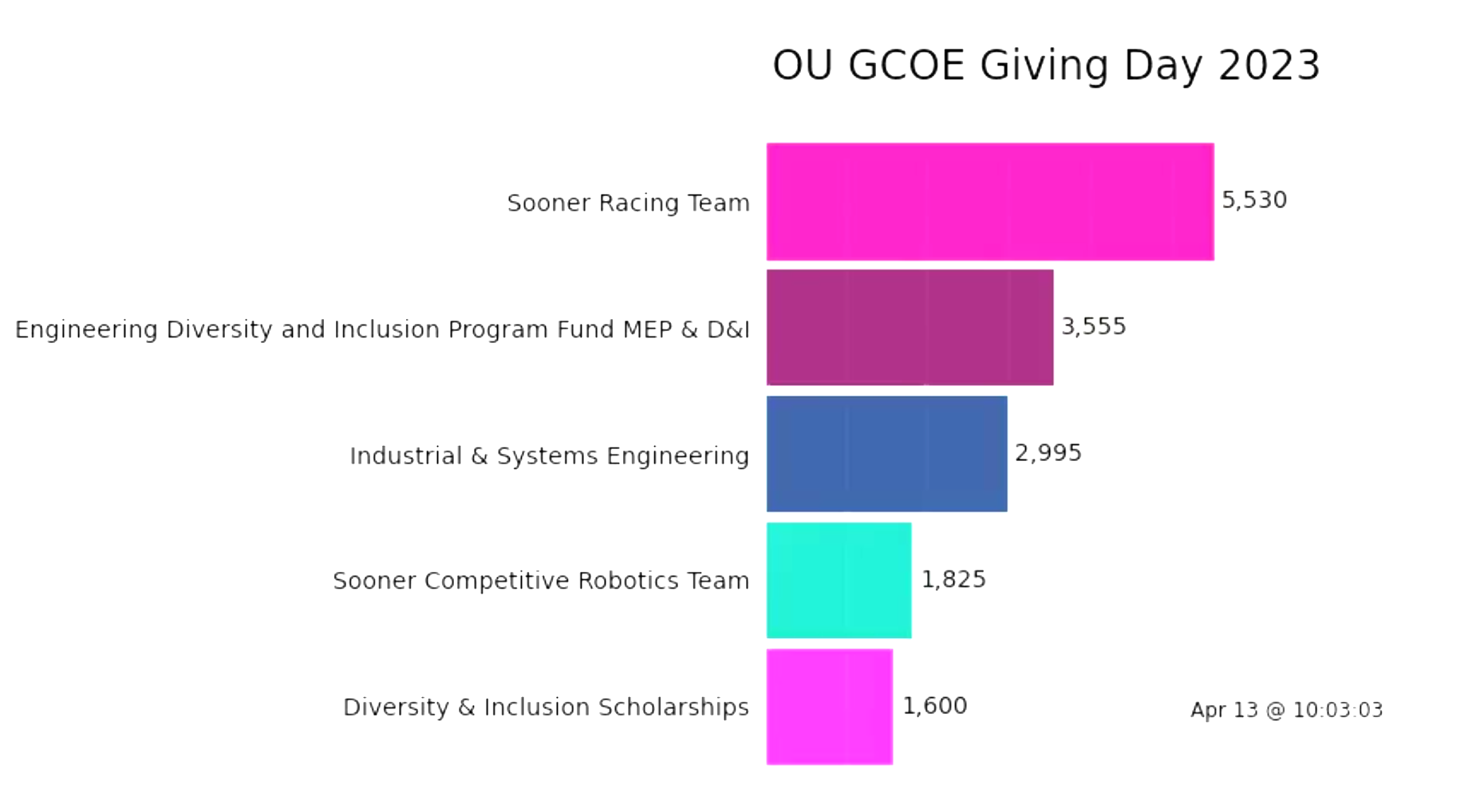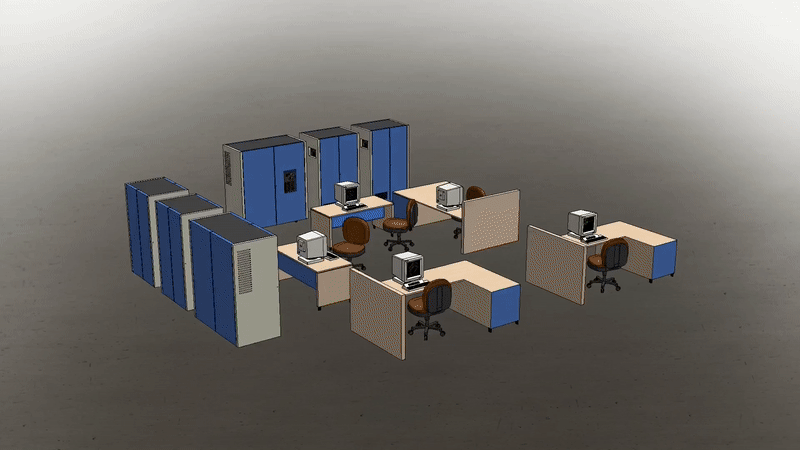
Final Assembly
Inspiration
This project was completed as part of my Intro to CAD Theory class. It is intended as a semi-realistic homage to the computing history behind Computer Aided Design. Not only is it an homage to the working environment that many research scientists and engineers went to work in, but also to Pierre Bezier. The symbol floating above the workspace was created using the extrusion and intersection of two bezier curves. Bezier needs little introduction, but few know that his UNISURF system was the very first CAD software.
 IBM 4381 Mainframe
IBM 4381 Mainframe
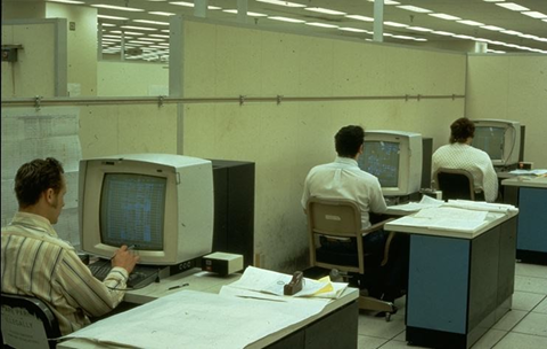 1970s CAD workspace
1970s CAD workspace
This project is essentially a recreation of a business computing workspace which may have been used to run early CAD programs such as UNISURF or CATIA. The models include the IBM 4381 mainframe, 3380 DASD, 3880 storage director, 3205 Color Display, keyboard, and office equipment inspired by 1970s-1980s computing workspaces.
3205 Color Display Monitors with Display Inserts
Probably my favorite part of this project, aside from creating the video for the final assembly showcase, was to create these modular 3205 displays with different inserts. These screens feature visicalc, wordpress, and an early version of CATIA.
Background & Research
If you love computer and engineering history, dig through some manuals for the
IBM 4381, 3880, 3380, and the 3205 display and keyboard. Also take a look at some historical photos from the time. For
a rough history, read this.
Our biggest source of information for the project was computerhistory.org, particularly
these pages,
| https://www.computerhistory.org/collections/catalog/X1640.99CF |
| https://www.computerhistory.org/collections/catalog/X1640.99CQ |
| https://www.computerhistory.org/collections/catalog/X1640.99CS |
Other sources were extremely useful as well. The most noteworthy of which was this, a manual on the 3205 color display. I worked on the monitor for this display, while Alejandro worked on the keyboard.
IBM Models
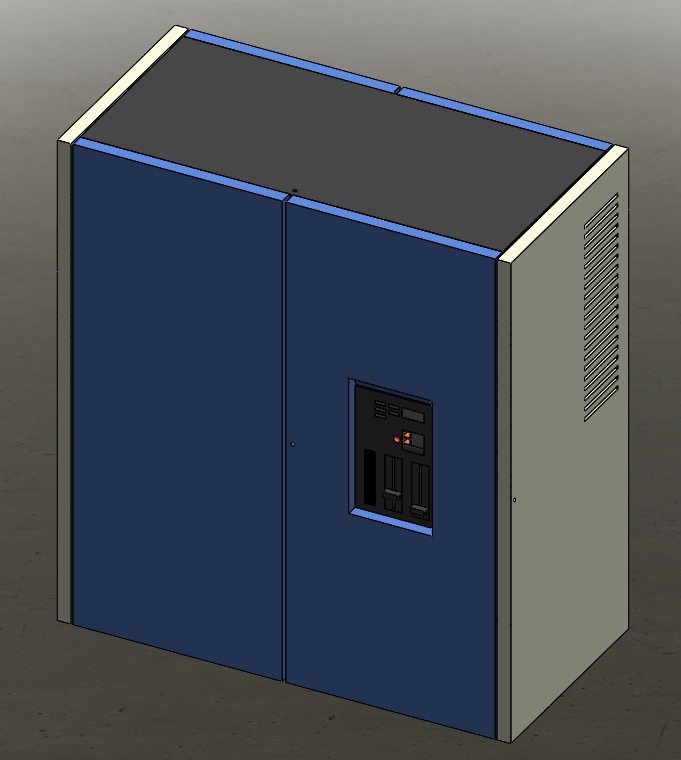 IBM 4381 Mainframe
IBM 4381 Mainframe
 IBM 3380 DASD
IBM 3380 DASD
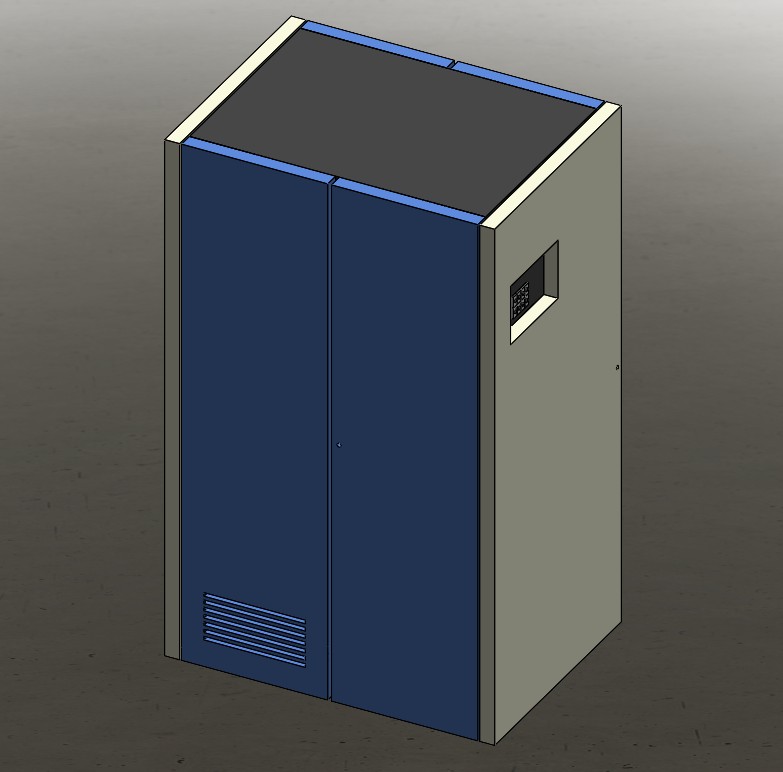 IBM 3880 Storage Director
IBM 3880 Storage Director
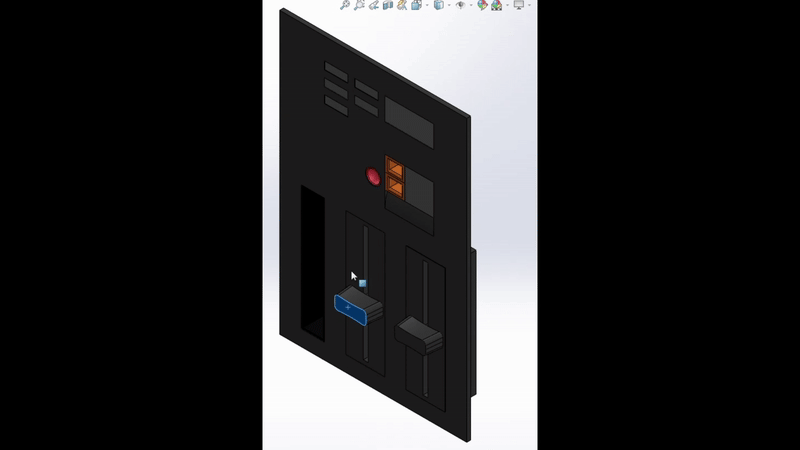 IO Panel Sub-assembly
IO Panel Sub-assembly
While they only serve as the "frame" of the office environment, these IBM models were really the heart of the computing behind early CAD operations. Recreating these in CAD was fairly straightforward, but reusing common sub-assemblies for the IO, wheels, or doors across each model was what made that work easy.
Models by Alejandro Serrano
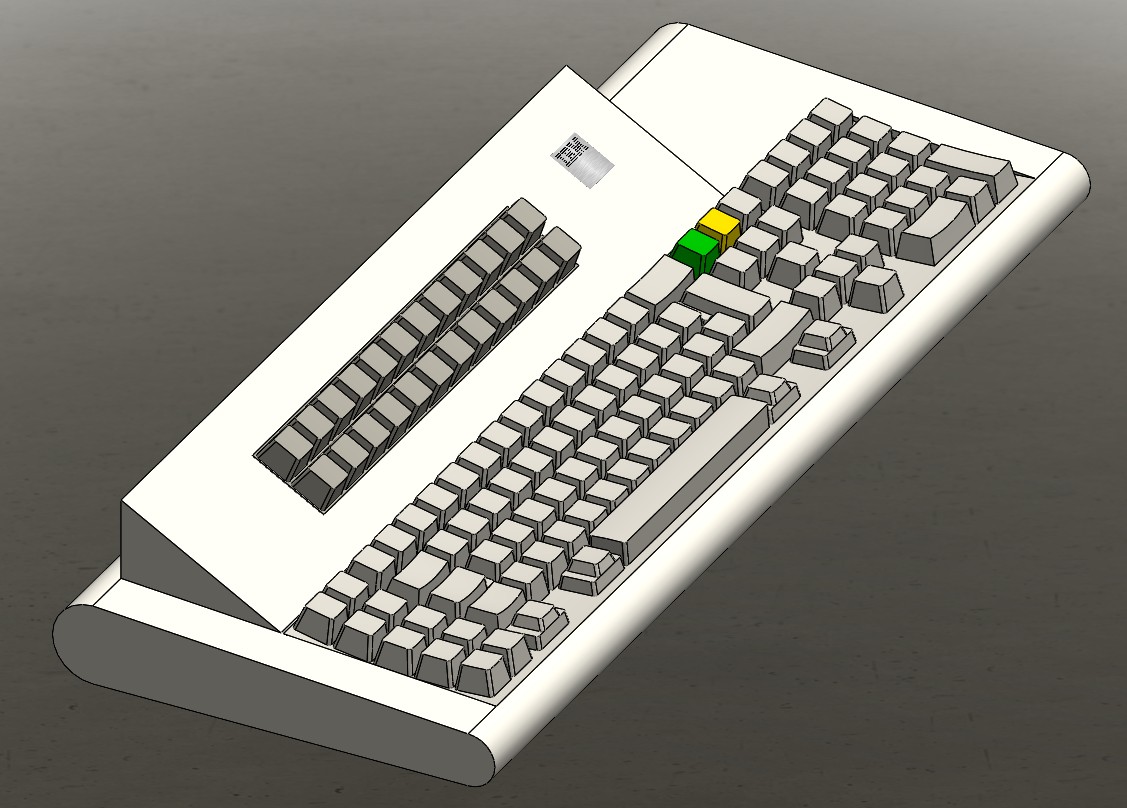 IBM 3205 Keyboard
IBM 3205 Keyboard
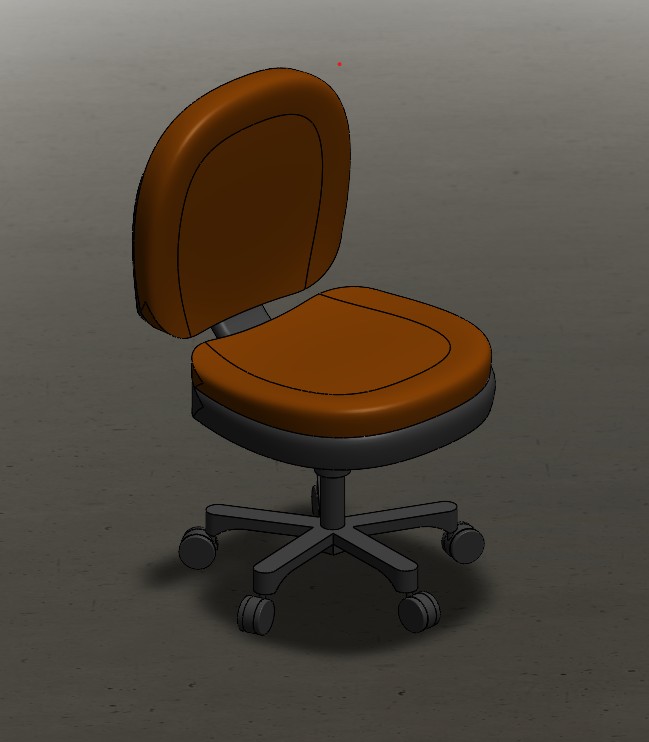 Desk Chair
Desk Chair
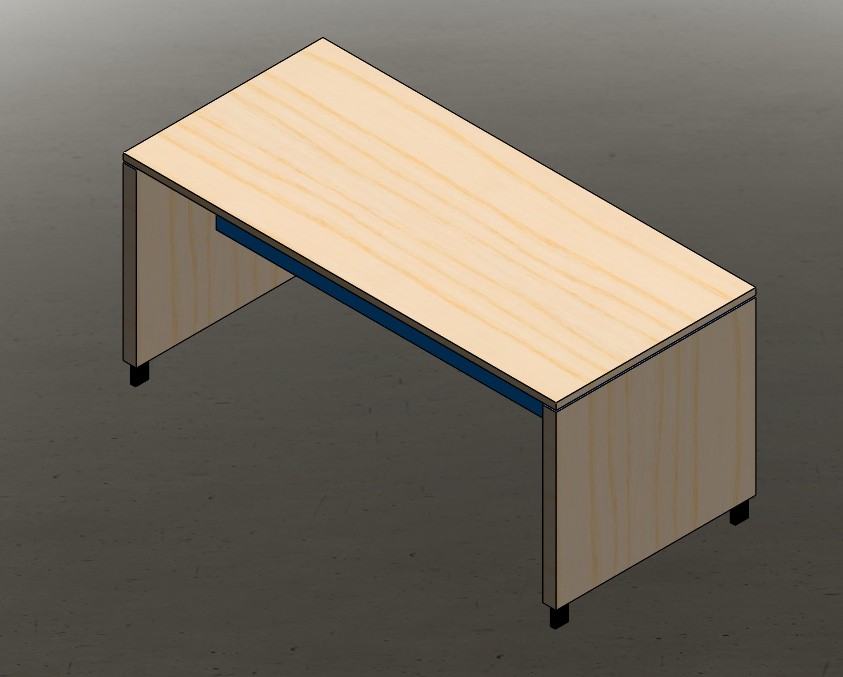 Desk
Desk
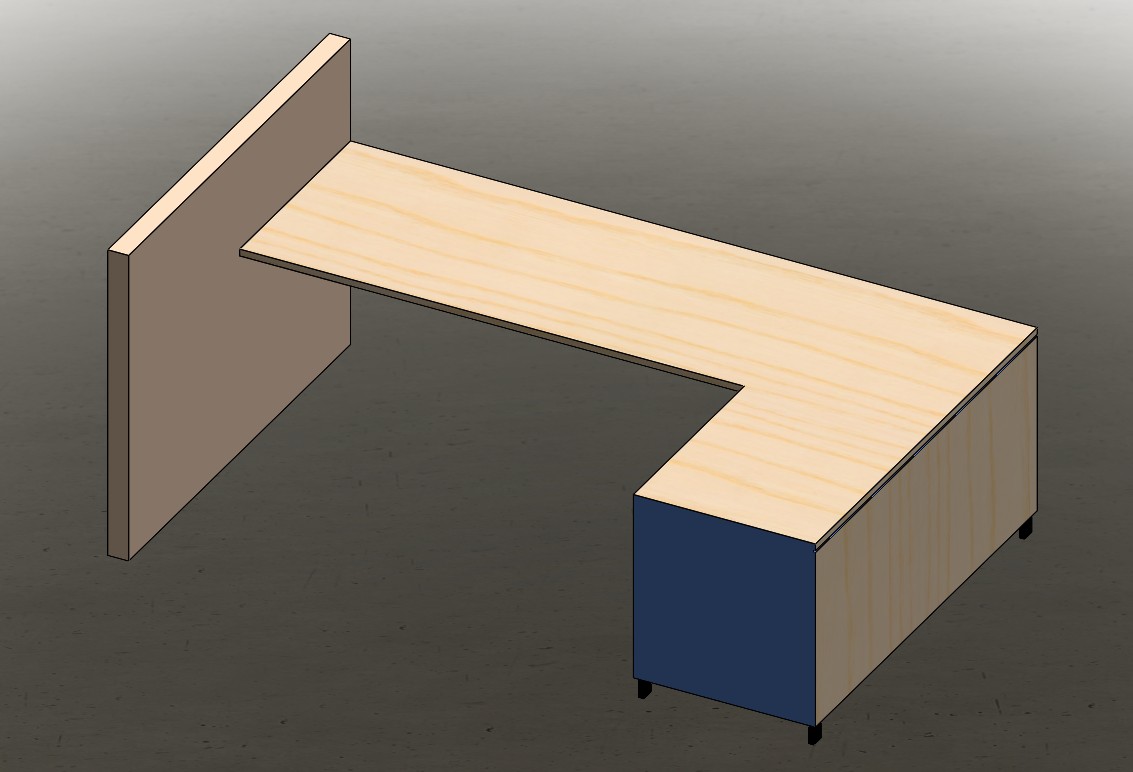 L-Shaped Desk
L-Shaped Desk
This project would not have been a success without the fantastic modeling work done by my classmate and project partner Alejandro Serrano. This project needed aesthetic cohesion, and Alex just got that. The ergonomics of his two best models, the 3205 keyboard, and the desk chair, were challenging to pull off, and he absolutely nailed them.
Watch the final presentation
Read the original proposal
